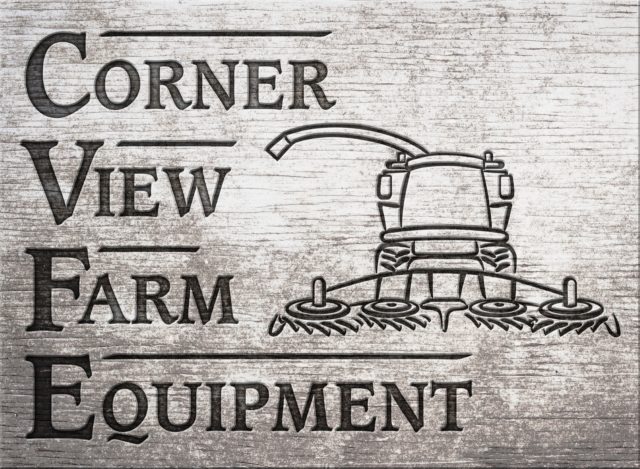A properly balanced ration is part science and part art, creating an ideal composition from available feeds to provide the nutrients necessary for optimal milk production and herd health.
Because of the complexity of this task, slight ration modifications can frequently occur and must be shared with the on-farm staff for full compliance. Through open lines of communication, orderly feed mixing processes and a dedicated monitoring system, you can rest assured the same ration carefully formulated on paper successfully reaches the feedbunk.
Calvin Willis, dairy nutrition consultant with CMW Nutrition of Norco, California, shares that there are four rations created on the farm – the one on paper, the one prepared in the mixer truck, the one delivered to the cows and the one cows actually eat. The goal, he notes, is for the ration cows consume to match the one designed on paper.
Organized feeding programs
An effective system ensures the right feeds are mixed at the right time to deliver the right ration, explains Willis. For your nutritionist’s ration to reach the feedbunk:
• Organize group feeding order. Have an order detailing the sequence in which rations should be delivered to each group of cows. Whether you feed fresh cows first, followed by high-producing and low-producing groups, and then close-up and far-off dry cows and heifers, keep the order consistent. If it changes often, notes Willis, you may mistakenly feed the fresh-cow ration to the wrong group of cows, such as the cows in the dry pen or in the close-up pens. Feeding the wrong ration to a group over a long period of time could be extremely detrimental, not to mention more costly than necessary.
• Provide a loading order. For proper ration mixing and consistent delivery, provide an order in which feeds should be added to the mixer wagon. Willis suggests organizing feeds in the commodity sheds in the order they should be added to the mixer, which will make it easier for your feeder. Coarser feeds should be stored closest to the loading wagon so they’re loaded first and have the longest time to mix. Other feeds that shouldn’t be broken down further, like shelled corn, should be added towards the end.
• Premix the small stuff. Willis suggests premixing ingredients fed at a rate of less than four to five pounds per cow. Rather than trying to add a couple hundred pounds of each feed, which can take extra time, mixing these feeds together and having a bay of premix will allow for easier loading as larger volumes can be added to the mixer wagon.
• Color-code bags. In some instances bags of feed look similar, which can cause confusion when mixing diets. To avoid supplements accidentally being fed in the wrong ration, color-code the bags so all feeders know that a specific color represents a specific cow group. For example, place red tags on all dry cow supplements and blue tags on lactating cows’ feed bags. Use these systems consistently and continuously for the right feeds to reach the right group of cows.
• Precisely name feeds. List feeds on the printed ration by their precise name, recommends Willis. If the full name of the feed is not on the sheet, major mistakes, like replacing shelled corn with corn silage, can occur.
Communication is key for success
Even if multiple employees are responsible for feeding throughout the week, maintain consistency in the feeding program through open lines of communication with the nutritionist, herd manager and feed manager. In many instances, explains Willis, one feeder has many years of experience and often serves as the communication channel between the nutritionist and herdsman and the other employees.
Build a strong relationship with your feed manager so ration changes are properly communicated to feeders. When problems arise, hold team meetings to discuss how to overcome the current problems and prevent future challenges.
Monitor performance frequently
Once changes are made to the diet, monitor both employee performance and cow health to ensure your ration delivery protocols are effective. Using a feed tracking program that shows employees how much feed has already been added to the mixer is a good way to match the mixed ration with the one prescribed by your nutritionist, explains Willis. These programs also provide printable performance reports and will allow incorrect feeding techniques to be revised.
One way to measure accuracy through feed tracking programs is by consulting the percent error value. The percent error function measures the feeder’s ability to meet the expected requirements while loading feed into the mixer wagon. While error can vary depending on the operator, most will range from having 0 to 3 percent error, says Willis. Because you will have performance reports on each employee, discuss the tracking results function regularly to ensure minimal error. If you see fluctuations in performance, encourage open discussion on what adjustments are necessary to improve accuracy and consistency.
A properly formulated ration on paper is only half of the equation. How it is implemented by your employees will have just as great, if not an even greater, impact on productivity and health. By explaining why a task must be completed, providing the tools and information necessary to mix the right ration, and continuously monitoring performance, the ration delivered to the feedbunk will more closely match the one prescribed on paper by your nutritionist. PD
Elliot Block Arm & Hammer Animal Nutrition








